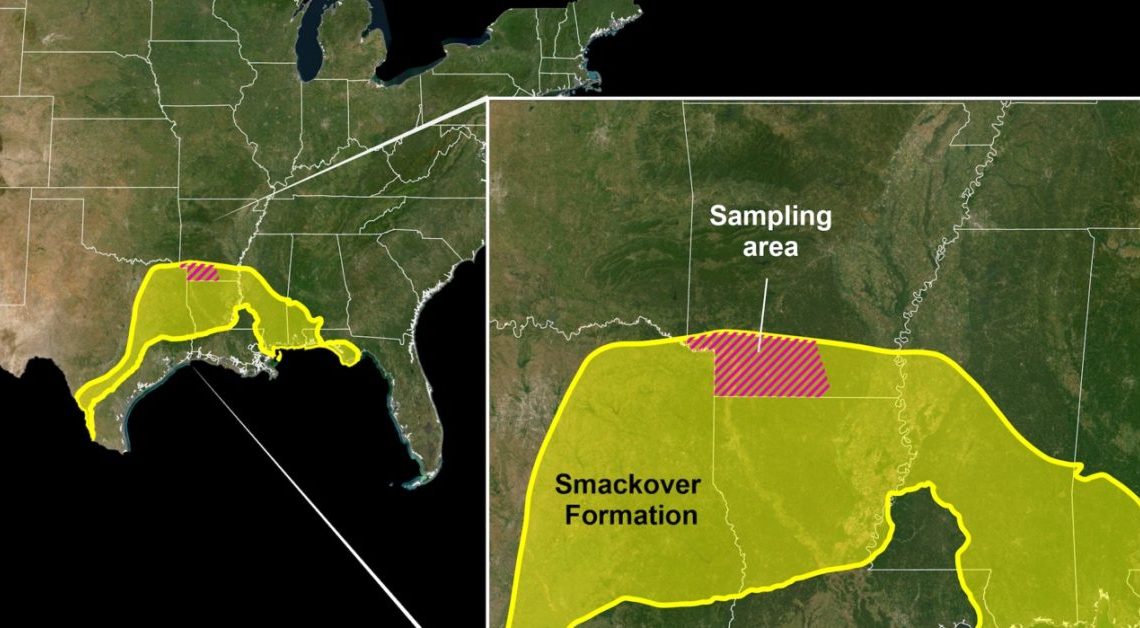
Researchers now estimate how much “white gold” may be found in southern Arkansas’s vast lithium reserves: up to 19 million tons, or enough to meet the projected 2030 world demand nine times over.
United States Geological Survey (USGS) researchers used water testing and machine learning to get an estimate of what might be found in an underground brine in the Smackover Formation in southern Arkansas, a relic of an ancient sea that is now a vast limestone formation that stretches from Texas, Louisiana, Arkansas, Alabama, Mississippi, and into Florida. The researchers announced that it could contain anywhere from 5 million to 19 million tons of lithium.
“If commercially recoverable, the amount of lithium present would meet projected 2030 world demand for lithium in car batteries nine times over,” the researchers said in a news release.
Published in the journal Science Advances, the study cites that the lithium found in southern Arkansas could make up to 36% to 136% of the current US lithium reserve estimate – of course, that’s a sweeping number, but we get the gist. A lot of lithium, but the problem is how to get it out.
Lithium extraction – a nascent industry in the US – usually involves open-pit drilling and creating huge evaporation pools, all which can take months and years and leave destruction in their wake. Last year, ExxonMobil acquired the rights to 120,000 gross acres of the Smackover formation in southern Arkansas and have been using oil and gas drilling methods to access the saltwater brine about 10,000 feet underground.
To extract the lithium, the company uses direct lithium extraction (DLE) technology, in which brine is pumped to the surface, then lithium and other minerals are extracted before sending the water back underground. It’s touted as more environmentally friendly, but climate activists say the technology is largely untested and question the danger of using it at scale and how it could affect the water supply. Exxon has said that it aims to enter production in 2027, according to a report in the New York Times, and “to be churning out enough lithium by 2030 to supply more than a million electric vehicles per year.”
Of course, there are other hurdles. According to the Arkansas Times, five corporations in total have been looking to start extracting lithium in southern Arkansas, and are currently locked in a dispute with landowners over how much to pay for mineral rights. The companies – Albemarle Corporation, ExxonMobil, Standard Lithium, Lanxess, and Tetra Technologies Inc. – filed a joint application in late July to set a royalty rate of 1.82%, which landowners say would allow the companies to illegally bypass the state’s rulemaking process.
To get to their estimates, researchers took samples from Arkansas and analyzed them at the USGS Brine Research Instrumentation and Experimental lab in Reston, Virginia, and then compared them with data from historic samples within the USGS Produced Waters Database of water from hydrocarbon production. Using machine learning, researchers combined lithium concentrations in brines with geological data to create maps that predict total lithium concentrations across the region, even in areas lacking lithium samples.
“Our research was able to estimate total lithium present in the southwestern portion of the Smackover in Arkansas for the first time,” said Katherine Knierim, a hydrologist and the study’s principal researcher. While noting that the estimates are “an in-place assessment,” she adds that they “estimate there is enough dissolved lithium present in that region to replace US imports of lithium and more.”
Author: Jennifer Mossalgue
Source: Electrek




That was clear. As soon as a substance is in demand, then you really look for it. And lithium occurs frequently. Even here in Germany in the Rhine Trench they have found large deposits and Germany is really not a country with rich mineral resources. This means that the fairy tale of electric car opponents, that the mining of the required raw materials makes the electric car questionable, cannot be held.